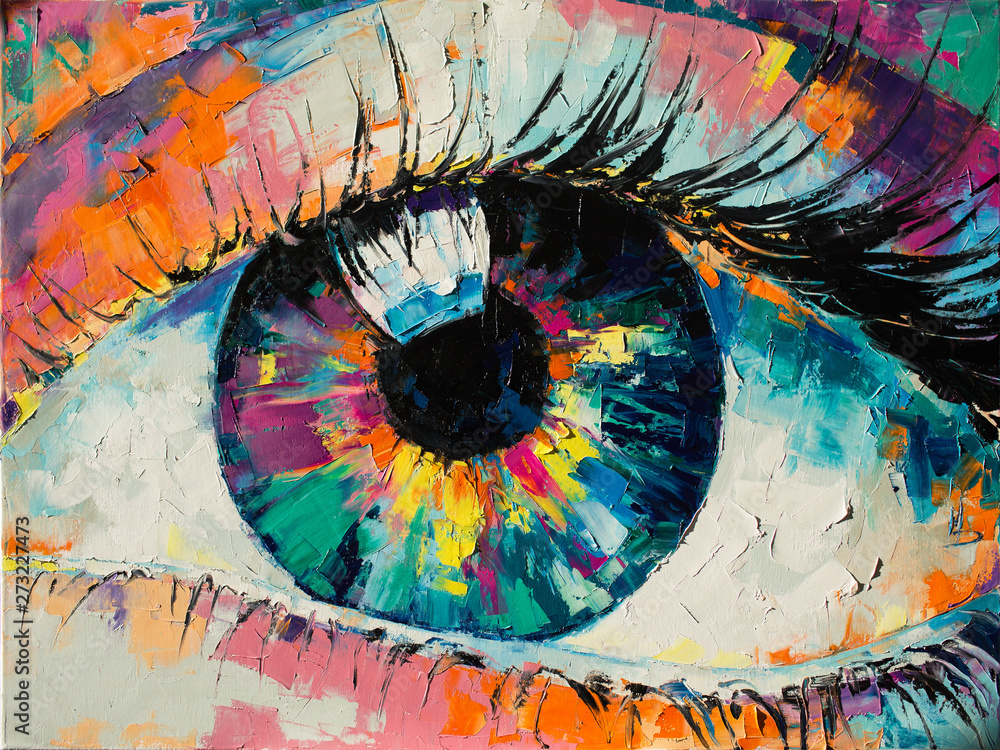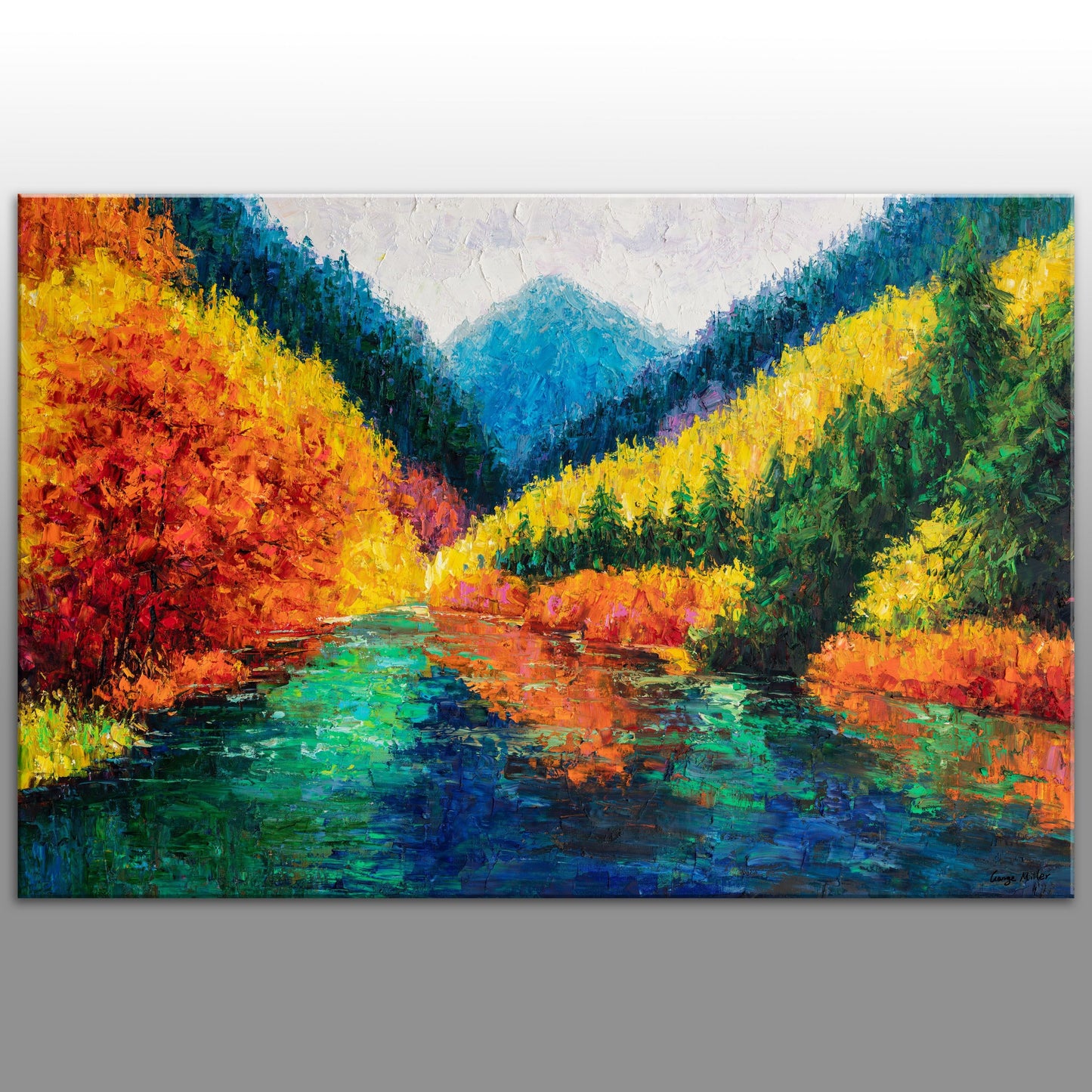Checking out All About Oil Paintings: A Guide to Understanding Their Beauty and Value
Oil paints have actually astounded target markets for centuries, using a glance right into the imaginative proficiency of different eras. Their rich history is linked with ingenious techniques and profound emotional expression. Understanding the products and approaches behind these art work can improve recognition. Furthermore, the market for oil paints presents opportunities for capitalists and enthusiasts alike. As one explores this remarkable globe, the concern arises: what makes an oil painting truly beneficial?
The Background of Oil Painting: A Trip Through Time
Oil paint has roots that date back to ancient times, it really prospered during the Renaissance, when musicians discovered its adaptability and abundant color potential. Early instances can be mapped to the 7th century, with strategies developing significantly across societies. The tool became popular in Northern Europe in the 15th century, specifically via the jobs of artists like Jan van Eyck, that pioneered its usage for comprehensive realism and dynamic colors. This period marked a departure from tempera paints, enabling greater depth and structure. As oil paint spread, it influenced many musicians, resulting in work of arts by prominent numbers such as Leonardo da Vinci and Rembrandt. The tool's legacy continues, forming the art globe well right into modern times.
Comprehending Oil Repaints: Products and Techniques
As musicians explore the world of oil paints, they experience a diverse selection of products and techniques that define this medium. The main components of oil paint include pigments, which supply shade, and drying oils, such as linseed, that bind the pigments and facilitate application. Various additives can customize the paint's structure and drying out time, improving adaptability. Strategies like glazing, where clear layers are constructed up, and impasto, which involves applying thick paint, enable different visual effects. Furthermore, making use of brushes, combination blades, and even fingers can produce special structures and coatings. Understanding these products and methods enables artists to fully share their creative thinking and achieve the wanted impact in their artwork.
The Duty of Shade in Oil Paintings
Shade plays a pivotal duty in oil paintings, influencing both aesthetic appeal and psychological resonance. Comprehending color theory fundamentals, consisting of the relationships in between hues, can boost an artist's ability to convey state of mind and environment. In addition, grasping color blending methods permits greater deepness and richness in a painting's scheme.

Color Concept Essential
Recognizing color theory is important for artists dealing with oil paints, as it develops the foundation for creating aesthetically appealing and harmonious compositions. Shade concept includes the research study of how shades connect, the shade wheel, and the connections in between key, additional, and tertiary colors. Musicians use complementary shades to boost contrasts and produce focal points, while similar colors advertise unity and cohesiveness within an item. Additionally, the principles of cozy and great shades influence the perception of deepness and area in a painting. Realizing these principles allows musicians to manipulate shade successfully, guiding the customer's eye and communicating their designated message. Proficiency of color theory ultimately enhances an artist's ability to communicate feelings and concepts via their job.
Emotional Effect of Shade
The emotional effect of shade in oil paints plays a crucial function in just how audiences connect and perceive with art work. Shades evoke certain feelings and moods, influencing the customer's mood. Cozy tones like oranges and reds can develop a feeling of heat and energy, while great tones such as blues and eco-friendlies typically evoke peace or introspection. Artists strategically choose shade combinations to improve narrative elements, directing the audience's psychological journey. The saturation and contrast of shades better intensify these effects, attracting interest and producing emphasis. Eventually, the interplay of shades in oil paints not only enhances their aesthetic appeal however likewise works as an effective tool for psychological expression, enhancing the customer's experience and analysis.
Color Combining Techniques
While several facets of oil painting add to the total make-up, understanding shade blending strategies is important for achieving desired effects and depth. Shade mixing can be approached with various methods, including the additive and subtractive processes. Additive mixing entails incorporating shades of light, while subtractive blending depends on pigments, where shades mix to produce new shades. Musicians usually make use of a limited combination to create harmonious jobs, comprehending the relationships in between main, second, and tertiary shades. Methods such as glazing and scumbling better enhance deepness and brightness. By masterfully mixing colors, an artist can stimulate feelings, produce centerpieces, and accomplish a feeling of realism, ultimately raising the painting's emotional and visual impact.
Famous Oil Painters and Their Iconic Functions

Renowned for their proficiency of color and method, oil painters have actually created a few of the most renowned art work in history. Prominent artists like Vincent van Gogh astounded target markets with his emotive brushwork in "Starry Night," while Claude Monet's "Impression, Sunrise" prepared for Impressionism. Leonardo da Vinci's "Mona Lisa" stays an enduring sign of creative wizard, showcasing his skill in recording human expression. Rembrandt's "The Night Watch" illustrates his innovative usage of light and darkness. Various other notable numbers include Pablo Picasso, that revolutionized modern-day art with his vibrant experimentation in jobs like "Les Demoiselles d'Avignon," and Georgia O'Keeffe, whose vivid depictions of blossoms and landscapes helped specify American modernism. Each artist's unique design added considerably to the oil paint landscape.
How to Evaluate the Quality of an Oil Paint
Examining the quality of an oil painting involves a mindful assessment of craftsmanship techniques, as well as an analysis of shade and make-up. Observing brushwork, layering, and the application of paint can disclose the musician's ability level. In addition, the interplay of shades and the total plan of aspects add significantly to the painting's aesthetic value.
Analyzing Craftsmanship Techniques
A precise evaluation of craftsmanship strategies is essential for determining the high quality of an oil painting. Evaluators need to initially take a look at the application of paint; thick, distinctive brushstrokes may suggest a competent hand, while overly uniform applications could show an absence of depth. oil paintings for sale. The layering strategy is likewise important; the presence of lusters and varied density can improve luminosity and intricacy. Additionally, the top quality of the materials made use of, such as the canvas and pigments, plays a substantial role in longevity and general visual. Attention to information in components like edges and shifts in between shades reflects the artist's dedication to their craft. Ultimately, these methods add to the painting's emotional effect and market worth, working as signs of the artist's ability and intent
Analyzing Color and Composition
While assessing the top quality of an oil painting, one have to focus on the interaction of color and structure, as these elements are essential to the art work's general influence. Color options can develop and stimulate feelings state of mind; therefore, the musician's combination ought to be checked out for consistency and contrast. A well-balanced structure guides the customer's eye and develops a feeling of unity. Artists commonly utilize strategies like the policy of thirds or leading lines to boost visual passion. In addition, the usage of light and darkness can add depth, enhancing the three-dimensionality of the painting. Eventually, a successful oil paint weds shade and make-up, engaging the visitor and welcoming a deeper appreciation of the artist's vision and method.
Caring for and Preserving Oil Paintings
Correct care and preservation of oil paints is important for maintaining their honesty and longevity. To secure these art work, it is important to present them far from straight sunlight, which can cause fading and discoloration. Keeping a stable environment with regulated temperature level and moisture more help in preventing damages. Cleaning need to be done carefully utilizing a soft, dry cloth, staying clear of any type of severe chemicals that can harm the paint or varnish. Normal evaluations for indicators of damage, such as flaking or splitting, are recommended. When storing or carrying oil paintings, proper cushioning and framework are essential to prevent physical injury. Inevitably, thorough care contributes to the aesthetic charm and value of oil paints over time.
The Marketplace for Oil Paintings: Spending and accumulating
Comprehending the market dynamics for oil paints is necessary for financiers and collection agencies alike. The value of these art work is influenced by different aspects, including the musician's credibility, historical relevance, and existing patterns. Enthusiasts typically look for pieces that resonate directly while thinking about potential gratitude in value. Auctions and galleries function as key places for trading, with prices fluctuating based upon demand and rarity. Buying oil paints calls for research right into the marketplace, along with an understanding of authenticity and provenance. Additionally, emerging artists might use opportunities for substantial returns, while established names can regulate high rates. In general, a tactical approach to gathering can yield both aesthetic enjoyment and economic rewards.

Frequently Asked Inquiries
What Are the Ecological Effects of Oil Painting Products?
The ecological impacts of oil paint products include the release of unpredictable natural check here substances (VOCs), harmful waste generation, and source extraction for pigments. These elements add to contamination and ecological deterioration, elevating concerns among environmentally aware artists and customers.
How Do Various Canvases Influence Oil Paint Outcomes?
Various canvases affect oil painting results significantly. Surface area, structure, and absorbency top quality can change paint application, drying out times, and shade vibrancy. Artists commonly choose certain canvases to accomplish preferred effects and enhance their imaginative expression.
Can Oil Paintings Be Brought Back if Harmed?
Oil paints can undoubtedly be brought back if damaged. Professional conservators make use of different techniques to repair splits, tidy surface areas, and address discoloration, making sure that the art work preserves its initial beauty and value for future generations.
What Are the Indications of an Original Oil Paint?
The indicators of an initial oil paint include visible brush strokes, texture variations, and an unequal canvas weave (oil paintings for sale). In addition, credibility may be validated via provenance, trademarks, and the presence of a varnish layer unique to oil tools
Just How Has Modern Technology Influenced Modern Oil Paint Techniques?
Modern technology has actually substantially affected modern-day oil paint strategies by presenting digital tools for planning, enhanced materials for texture and long life, and on-line systems for sharing and marketing art, therefore expanding musicians' innovative opportunities and audience get to. Oil paint has origins that date back to old times, it genuinely grew during the Renaissance, when artists uncovered its convenience and abundant color capacity. The psychological impact of color in oil paints plays an important duty in exactly how viewers view and attach with artwork. While several aspects of oil painting add to the total composition, mastering color blending strategies is vital for attaining desired impacts and depth. Reviewing the high quality of an oil paint includes a careful analysis of craftsmanship strategies, as well as an evaluation of color and structure. While evaluating the top quality of an oil painting, one have to focus on the interplay of shade and structure, as these components are essential to the art work's general influence.